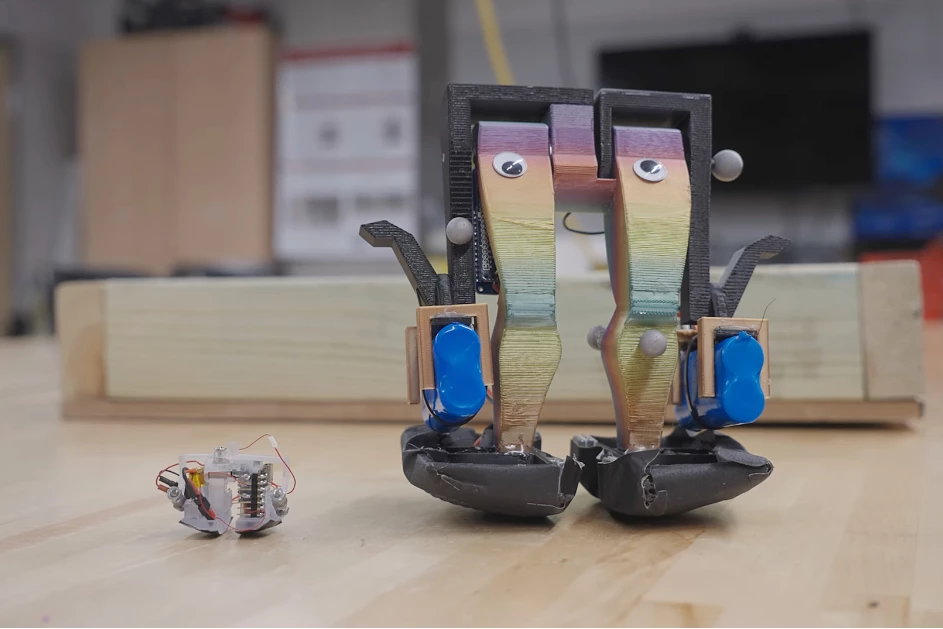What's 3.6 cm tall (1.4 in), and could one day be performing tasks such as walking through disaster site rubble looking for trapped survivors? It's Zippy, which is reportedly the smallest self-contained bipedal robot ever made – and it uses a simple but clever walking mechanism.
The 25-g (0.9-oz) Zippy is the descendant of Mugatu, an 18.5-cm-tall (7.3-in) bipedal robot which we told you about two years ago. That bot was built at Carnegie Mellon University, by a team led by professors Aaron Johnson and Sarah Bergbreiter.
As we explained at the time, Mugatu was inspired by a 1930s toy known as the Wilson Walkie. These unpowered wooden figures have swinging legs with large feet on the bottom. When one of the figures is placed at the top of a ramp, the force of gravity causes the toy to walk down to the bottom by shuffling its legs back and forth.
In the case of Mugatu – which can't always be walking down ramps – gravity is replaced by an oscillating hip motor.

The robot begins by standing still, with both legs side-by-side. Its motor then swings its left leg forward. As this happens, the bot's center of gravity shifts toward that leg, causing the robot to pitch forward and roll onto its left foot.
By doing so, Mugatu creates enough clearance for its right leg to then swing forward and past the left, which it does. The robot thus then pitches forward and rolls onto its right foot, after which the process is repeated over and over again. Turning to the left or right is managed by simply swinging one leg faster or over a longer distance than the other.
Fast-forward to 2025, and a variation on that system has been integrated into the diminutive Zippy. Johnson and Bergbreiter are still leading the project, along with undergrads Soma Narita, Josef Macera and Steven Man.
While Zippy uses the same basic mechanism as Mugatu – which includes a motor, battery and microcontroller – its small size has necessitated the addition of a mechanical hard stop to act as a joint limit for its hip. By contrast, Mugatu's motor serves as a joint limit on its own.
This setup allows Zippy to scuttle along at speeds of up to 25 cm/9.8 inches per second (0.9 km/h or 0.6 mph), or about 10 leg lengths per second. If an average-size adult human were running at that same leg-length-rate, they would be going approximately 30 km/h (19 mph). According to Bergbreiter, this makes Zippy the world's fastest power-autonomous bipedal robot for its size.
And importantly, the robot can also turn to either side, adopt a skipping gait, and even ascend small steps.
The scientists now plan on adding a camera, IMU (inertial measurement unit) and other sensors to Zippy, which will allow it to perceive and react to its environment. Swarms of the bots could even work together on collaborative tasks.
"They can go into tight spaces that people and even other robots cannot manage," says Man. "Zippy could be a resource for emergency search and rescue, industrial inspection, and even deployment to geologically interesting areas for scientific research."
A paper on the study was presented this week at the IEEE International Conference on Robotics and Automation in Atlanta.
Source: Carnegie Mellon University



